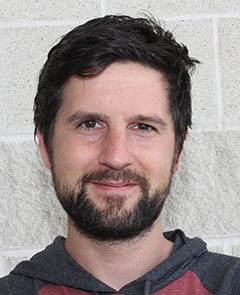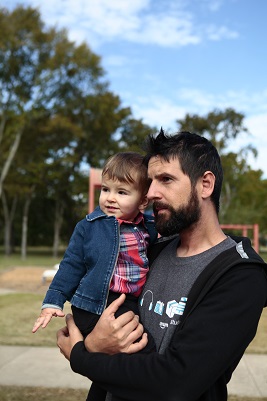

Alain Lenoir Mis à jour 11-Aoû-2025 Interview du 16 décembre 2020
A fait ses études à Angers, son master et sa thèse chez Serge Aron à Bruxelles, puis postdocs chez Abraham Hefetz à Tel Aviv, chez Claudie Doums à Paris, actuellement chez Ed Vargo au Texas (voir site web)
Master : Reproductive
strategies of the ant Cataglyphis velox, avec Serge Aron & Laurianne
Leniaud (2010)
Thèse : Reproductive strategies and genetic diversity in Cataglyphis
desert ants (2014).
Travaille actuellement
sur les fourmis invasives
- Brachyponera chinensis (Fourmi
aiguille asiatique, Asian needle ant) qui s'accouple entre frères
et soeurs à l'intérieur des colonies, ce qui faciliterait le caractère
invasif.
- Nylanderia fulva (fourmi
folle rousse, tawny crazy ant) qui forme une supercolonie sur plus de 2
000 km aux USA. Chez cette espèce très invasive aux USA il n'y a pas de reconnaissnace coloniale. Cela est lié à de faibles quantités d'hydrocarbures cuticulaires, mais en contrepartie ces fourmis sont plus sensibles à la dessication, ce qui sans doute limite leur propagation (Eyer et al 2025)..
Quelques
publications
- Eyer P-A, McDowell B, Johnson LNL, Calcaterra LA, Fernandez, MB, Shoemaker D,
Puckett RT, Vargo EL (2018) Supercolonial structure of invasive populations
of the tawny crazy ant Nylanderia fulva in the US. BMC Evolutionary Biology,
18, 209.
- Eyer P-A, Matsuura K, Vargo EL, Kobayashi K, Yashiro Y, Suehiro W, Himuro C,
Yokoi T, Guénard B, Dunn RR, Tsuji K (2018) Inbreeding tolerance as a
pre-adapted trait for invasion success in the invasive needle ant Brachyponera
chinensis. Molecular Ecology, 27, 4711-4724
- Eyer, PA., Helms, A.M., Moran, M.N. et al. (2025). Reduced Cuticular Hydrocarbon Production in a Unicolonial Population of the Ant, Nylanderia fulva, Is Associated with Low Desiccation Resistance in its Invasive Range. J Chem Ecol 51, 78 (2025). https://doi.org/10.1007/s10886-025-01635-w
Cuticular hydrocarbons (CHCs) are ubiquitous among insects where they form an outer wax layer that helps maintain water balance and prevent desiccation. In social insects, CHCs were subsequently co-opted as semiochemicals in many contexts, including nestmate recognition, which maintains boundaries among competing colonies by ousting non-nestmates. In some ant populations, workers do not discriminate against non-nestmates. This leads to the development of supercolonies, a large network of interconnected nests exchanging unrelated individuals. In this study, we investigate CHC production by workers and their resistance to desiccation in the ant Nylanderia fulva, which exhibits supercolonial behavior within its invasive range in the USA. We found reduced CHC production by workers and increased susceptibility toward desiccation compared to other invasive ants of similar body size. This CHC-poor chemical profile sheds light on the susceptibility of this species to abiotic stress through desiccation with implications for its potential distribution and its development of large supercolonies in its invasive range by impairing nestmate recognition.